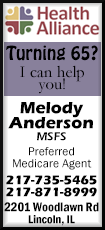|
Young U.S. voter turnout surges, but
challenges linger
 Send a link to a friend
Send a link to a friend
 [November 02, 2018]
By Colleen Jenkins [November 02, 2018]
By Colleen Jenkins
(Reuters) - Early turnout by young voters
has surged ahead of Tuesday's congressional midterm elections, powered
by gains in states whose voters are pivotal to Democrats' chances of
winning back control of the U.S. Congress.
Young American activists, angry over President Donald Trump and a wave
of deadly school shootings, had vowed to get their peers to the polls in
unprecedented numbers. The initial turnout, along with the results of
opinion polls, higher registration rates and increased absentee ballot
requests, suggests their political enthusiasm has not waned.
"In fact, as we get closer, I think it’s only likely to increase," said
John Della Volpe, polling director at the Harvard Kennedy School
Institute of Politics.
That could be good news for Democrats, who need a younger, more diverse
electorate to win some of their toughest races. Young voters are more
likely to be Democratic, and Reuters/Ipsos polling has found young
Democrats are more likely than young Republicans to say they are certain
to vote this year.
Initial estimates modeled from survey responses, voter registrations and
other data show huge increases in early turnout of voters ages 18-29
compared with the last midterm elections in 2014.
In Republican-leaning Texas and Georgia, early and absentee voting by
people under 30 has increased by more than 400 percent, according to
TargetSmart, a Democratic data firm tracking early voting nationwide.

In Florida and Arizona, ballots cast by young voters are up 131 percent
and 217 percent, respectively, from 2014, TargetSmart's analysis shows.
In comparison, among voters ages 30-39, voting is up by 121 percent in
Florida and 172 percent in Arizona, the analysis shows.
Those states feature some of this cycle's highest-profile races,
including the progressive campaigns of Beto O'Rourke for a U.S. Senate
seat in Texas, and Andrew Gillum and Stacey Abrams for governor in
Florida and Georgia, respectively.
Overall early voting in those four states has topped their 2014 levels,
fueled by increased turnout across all ages. Young voters registered the
biggest gains but still had the lowest turnout so far of any age group.
Early voting data does not reveal how someone voted and does not
indicate what turnout will look like on Election Day.
Jesse Hunt, spokesman for the National Republican Congressional
Committee, said Republicans should also benefit from the rising turnout
of young voters due largely to the strong economy.
"Recent college graduates will see the best labor market in years thanks
to the policies implemented by this Republican-led Congress, and those
voters will be receptive to the Republican agenda," Hunt said.
FLUMMOXED BY STAMPS
Beating the 2014 turnout is not that hard given how weak it was for
young voters, said Daniel Smith, a political scientist at the University
of Florida who is tracking voting data.
"Youth are energized, but so is everyone else this election," he said.
In the 2014 midterm election, only about 16 percent of adults ages 18-24
voted, compared with about 39 percent of Americans overall, according to
the U.S. Census Bureau.
Midterm elections in 1986 and 1994 marked the highest turnout for voters
under 30 in recent decades at 21 percent, census data shows.
[to top of second column]
|

Students wait in line to cast their ballot during early voting at an
outdoor polling location on the University of Irvine campus in
Irvine, California, U.S. October 30, 2018. REUTERS/Mike Blake/File
Photo

"Younger voters have gotten registered," Smith said. "But it’s not
like an automatic that they’re going to start voting."
Voting rights groups say they have been especially creative this
year to get young voters to the polls.
NextGen America, founded by billionaire liberal activist Tom Steyer,
has targeted college campuses. At the University of South Florida in
Tampa, the group made students “pinkie promise” to vote in exchange
for ring pops and even helped carry boxes into residence halls on
move-in day – while registering students to vote.
“Students aren’t apathetic,” said Rachel Clay, southeast regional
coordinator for the Campus Vote Project. "They are often first-time
voters, there are ID problems, they often don’t have a car, they
have classes all day. Voting is treated as kind of a hassle, rather
than being something to be excited about."
ENTHUSIASM HIGH
There are signs this year could be different.
A Harvard poll released this week showed Americans under 30 are much
more interested in voting than the past two midterm cycles.
Forty percent of those polled said they would "definitely vote" in
the upcoming elections, up from 27 percent in 2010 and 26 percent in
2014.
Della Volpe said actual turnout typically trails the polling data by
the high-single digits, still putting this year's turnout on track
to potentially surpass previous midterm cycles.
Both Democrats and Republicans indicated increased enthusiasm since
the spring, with 54 percent of Democrats intending to vote and 43
percent of Republicans planning to do so.

"We’re encouraged by the enthusiasm we’re seeing across the country,
but there’s a lot of work to be done," said Tyler Law, spokesman for
the Democratic Congressional Campaign Committee.
Katelyn Dino, a junior at LaGrange College in Georgia, said Tuesday
will mark the first time she votes in a non-presidential year. She
plans to cast her ballot for Abrams.
"I am actually skipping school on Nov. 6 to go vote," Dino said.
(Reporting by Colleen Jenkins; Additional reporting by Tim Reid in
Ohio, Letitia Stein in Florida, Chris Kahn and Grant Smith in New
York, Maria Caspani in Georgia; Editing by Jason Szep and Leslie
Adler)
[© 2018 Thomson Reuters. All rights
reserved.]
Copyright 2018 Reuters. All rights reserved. This material may not be published,
broadcast, rewritten or redistributed.
Thompson Reuters is solely responsible for this content. |